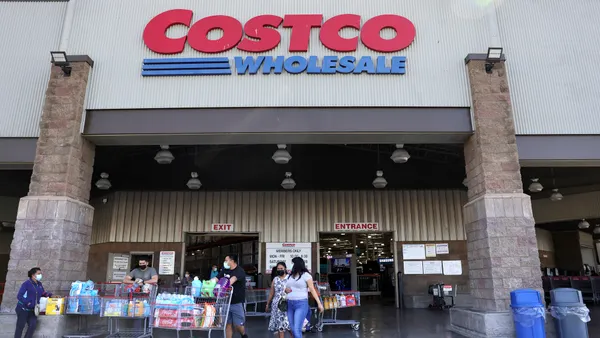As organizations strive to create more value in their supply chains, many are moving beyond traditional procurement philosophy.
Supplier Relationship Management, also known as SRM, is a popular practice that involves a company-wide assessment of how suppliers fit into the business strategy, and then managing supplier interactions and relationships throughout the entire lifecycle of a product. Advocates say it can help organizations reduce risk, increase contract compliance, foster innovation and drive a competitive advantage.
"It’s almost like a guidance counselor to serve as a conduit between the supplier and the business to make sure the relationship runs good and each side keeps to their side of the bargain,"Chris McClory, director of procurement and operations advisory at KPMG US, told Supply Chain Dive.
80% of organizations have now implemented or are likely to implement SRM in the next two years, according to a 2018 poll by APQC. But because every business relationship is unique, organizations must determine where to apply it and where they can find the most value.
Complex supply chains need diligent relationship management
For decades, traditional procurement models have typically involved buying products or services at the lowest price relative to quality and value. Organizations would typically establish contracts and put the relationship on autopilot unless there was an issue to address.
But in today’s complex and fast-paced global supply chain, relationships are more important than ever. "The reliability on third parties and suppliers has increased significantly in the past 15 to 20 years. Your ability to manage them and become a customer of choice is now critical if you want the best value," McClory told Supply Chain Dive.
Many big-name companies have moved away from purely transactional relationships to embrace next-generation SRM. Procter & Gamble and Cisco; Dell and FedEx; and Microsoft and Accenture are all examples of SRM-driven relationships, said Marisa Brown, senior principal research lead at APQC.
"It’s almost like a guidance counselor to serve as a conduit between the supplier and the business."

Chris McClory
Director of Procurement and Operations Advisory, KPMG US
Suppliers in abundant supply and with low complexity (such as in office and janitorial supplies) can remain transactional, but complex relationships with strategic risk require more diligent relationship management. In those areas, such as IT, cybersecurity or collaboration with third parties for innovation, organizations must focus on relationships throughout the entire lifecycle of a contract.
"Creating a win-win partnership and structuring appropriately can now be the difference between success and failure in many markets," Brown said.
Using SRM to unlock value
Many buyers look to their suppliers not only to reduce costs but to gain expertise and value they otherwise wouldn’t have.
The APQC poll found of those looking to SRM, 80% are doing so to reduce risk, and 72% are doing so to monitor contract compliance and service levels. Many companies could also use SRM to deliver a competitive advantage by improving supplier reliability and reducing risk through better quality relationships, Brown said.
In many cases, organizations find their suppliers’ success is directly tied to their own, Brown said. Moving from the traditional mindset of micromanaging suppliers to letting them lead with their expertise can unlock new value.
"Organizations pick a supplier because that supplier has either capabilities, skills or capacities it lacks. So why not let that supplier drive how to measure and achieve those results?"Brown said.
Practices and principles behind SRM
One starting point with SRM is to measure suppliers across a list of risk-related criteria, McClory said. This includes a supplier’s potential impact on business reputation, continuity plans and capacity, financial risk ratings and cybersecurity. This can help organizations learn where to focus because SRM can take time and resources.
"By segmenting your supply base, you understand who your strategic suppliers are, the ones that keep the lights, keep the production line running or keep the data secure. It is about understanding what the ROI [in the relationships] might be," McClory said.
McClory noted in a white paper there are some common practices in SRM that can help develop and maintain long-lasting relationships:
- Standardizing and incorporating key internal activities to a single SRM model.
- Involving key participants with strong leadership and coordination skills.
- Adopting collaborative, cross-enterprise interaction sessions.
- Defining a governance plan with stakeholders.
"It’s really about giving the suppliers the attention so that there is that economic tie between the organization and the supplier to create that win-win dynamic," McClory said.
APQC advocates a "next generation" SRM approach with several design principles. This includes shifting to an outcome-based business model for the most strategic relationships and focusing more on objectives and less on how work is conducted. Organizations should also clearly define the desired outcome for strategic relationships.
SRM: It’s all about the people
While SRM is guided by some principles, it must have flexible applications because every complex business relationship can be different and powered by its own mix of people and processes, Brown said.
"Fundamentally, it is about people, not technology," Brown said. "You have to understand the business purpose of the relationship and find the best fitting approaches. There is often a huge opportunity for sourcing and procurement to focus on innovation and building long-term relationships."
"Fundamentally, it is about people not technology."

Marisa Brown
Senior Principal Research Lead,APQC
While small organizations and suppliers can often optimize SRM through one-on-one relationships, larger organizations must often match departmental teams with each other.
What is most important is to establish a cadence and avoid the temptation to just "sign a contract and stick it in the bottom drawer," McClory said. "Just like any other relationship, you have to work at it. There has to be a weekly, monthly or quarterly cadence where everyone is getting together."
This story was first published in our weekly newsletter, Supply Chain Dive: Procurement. Sign up here.




















